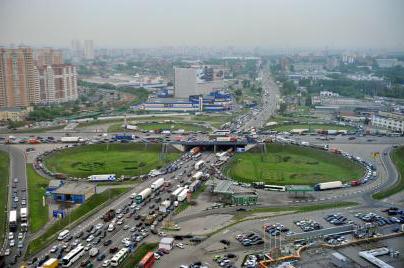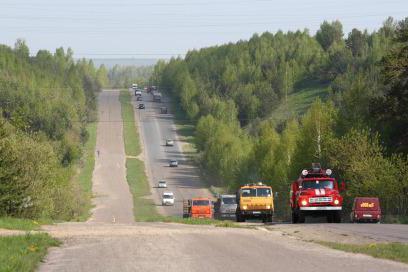It is well known that the Russian Federation has the largest territorial extension on the entire planet. The successful development of the economy, the functioning of all sectors of the national economy and the territorial integrity of such a large state itself cannot be ensured without well-functioning communication lines between its regions.
Russian roads
The road network of modern Russia has been formed over several centuries. Its current state in the Russian Federation can only be called good or at least satisfactory by an incorrigible idealist. Nevertheless, systematic work on improving road infrastructure in the Russian Federation is ongoing, at the planned state level. One manifestation of this is the unification of the entire road network in accordance with state standards. In a separate category in this classification, roads of federal significance are allocated. On these highways, communication is made between the capital of the country and regional administrative centers or between large regional cities.

In addition, federal roads lead from the capital to the borders with neighboring states. The sections of international highways passing through the country's territory from one border to another have the same status. The most important feature of federal roads is that their maintenance and construction are financed from the federal budget.
On the map of the country
In accordance with the current system of state standards, all federal roads have their own individual designation on maps and directories. It consists of a lettering index and a number with a track number. As a rule, the letter designation characterizes the distance of the route from the capital of the country, and the digital index after the letter indicates only a place in the general list of highways marked with this letter. Federal roads with the M index lead from Moscow to regional administrative centers or to the borders with neighboring countries. Highways with index P connect regional centers to each other. The prefixes AN and E before the letter indices indicate that these federal roads are part of international routes passing through the Asian or European part of the Russian Federation.

The disadvantage of the existing indexing system is the double designation on the maps and in the directories of the same highways for different classification criteria. Federal roads with the P index are often part of international routes. The designations of some of the most significant federal roads are supplemented by the name of the geographical region where you can get there. For example: federal
highway M-7 "Volga".
Driveways
On maps and directories, there are often tracks marked with the letter A. The fact is that each federal highway includes not only a segment of the path between the start and end points of the route, but also access roads to the main highway. They are designated by this letter. It is placed in front of the letter designation of the entire route. Access roads are fully covered by the federal road status.
List of roads
A complete list of highways includes several dozen items. You can find it in any reference publication. All roads of federal significance are located in it in ascending order of the digital sign following each letter index.
Currently, a new system for marking federal highways is being developed. Its introduction is expected no earlier than 2018. So in a few years, the current list of roads is simply becoming obsolete.
Federal public roads
According to the legislation in force in the Russian Federation, all roads existing in the country are divided into two legal categories. These are public and non-public roads. Of course, most of the road network has always been and will be in the first category. Nevertheless, some roads or their individual sections may be assigned the status of non-public roads. These restrictions can be adopted both in favor of state and private structures.
Access to such roads for ordinary citizens can be limited both on a temporary and permanent basis. This should be formalized, depending on legal affiliation, by federal authorities or by decision of the administrative bodies of regional administration. Non-public roads also include those built at the expense of individuals or industrial-commercial structures.
Paid highways
People in Russia have always used the tracks for free, limiting themselves to paying the state an annual transport tax. Therefore, any payment for federal roads always causes a sharp negative reaction among everyone who travels along them. And it is quite understandable. How to understand the simple fact that roads in the vast Russian expanses will never improve if you do not invest significant financial resources in their construction. World experience suggests that the introduction of fares provides a real opportunity to raise money for new autobahns.
With some delay, this practice begins to be used in Russia. Federal roads are already charged on
the M4 Don
highway and on some other sections of
federal highways in the European part of the country. And there is every reason to believe that in the near future this practice will find more and more application. The most important principle when introducing tolls on federal roads is the mandatory availability of a free alternative route. This means that the only way to the village cannot be paid under any circumstances.